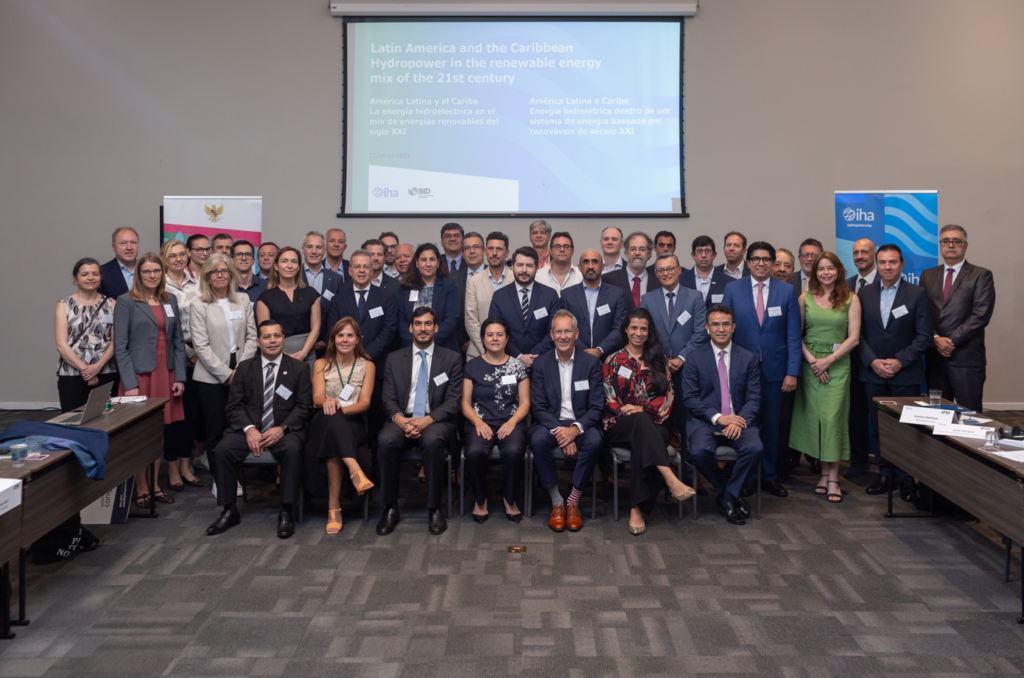Round Table 1
Whilst in Brazil, IHA convened some of the largest energy companies in the country to highlight how the government can unlock opportunities to increase the capacity of existing hydropower plants through modernisation.

Following the round table, the IHA issued an open letter signed by 22 participant companies, making the following recommendations, in line with the Brazil National Energy Plan 2050:
- Adoption of the Hydropower Sustainability Standard into the processes of development, implementation, financing and operation of hydropower plants.
- A need for improved mechanisms to incentivise obtaining licenses and concessions.
- Improved regulation to adequately remunerate Hydropower plants and reservoirs for their ancillary services such as flexibility, dispatchability, and storage.
Round Table 2
Karen also participated in an event hosted by the International American Development Bank to further discuss policy opportunities in the energy sector across Latin America and the Caribbean (LAC).
Sustainable hydropower will continue to be an essential part of the solution to meeting clean energy goals for LAC. Almost half of LAC’s electricity comes from hydropower, delivering essential low carbon baseload power and energy security.
 Credit: Marcos Gouvea
Credit: Marcos Gouvea
Board meeting and study tour
Following the board meeting, a site visit was arranged to visit the Itaipu Hydropower project on the border of Brazil and Paraguay. Itaipu is the third largest hydro-electric dam in the world and has the second largest generating capacity at 14GW.
The site visit included the dam, powerhouse and spillway, including some environmental and social projects run by the Itaipu Binacional company. The group also visited the pilot bio-methane and hydrogen plants.









